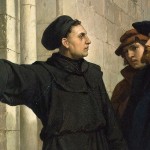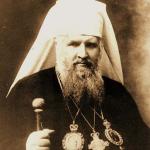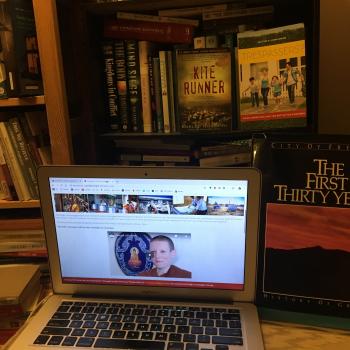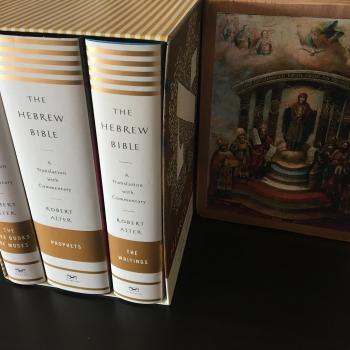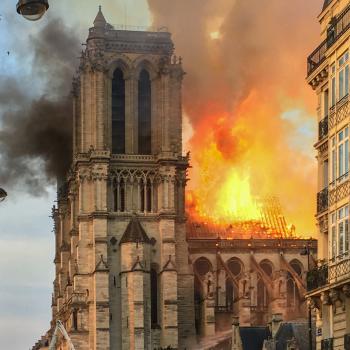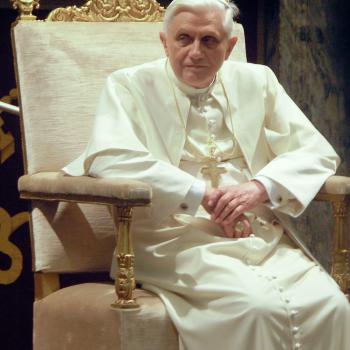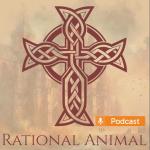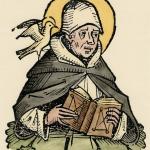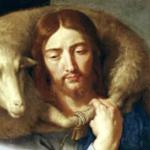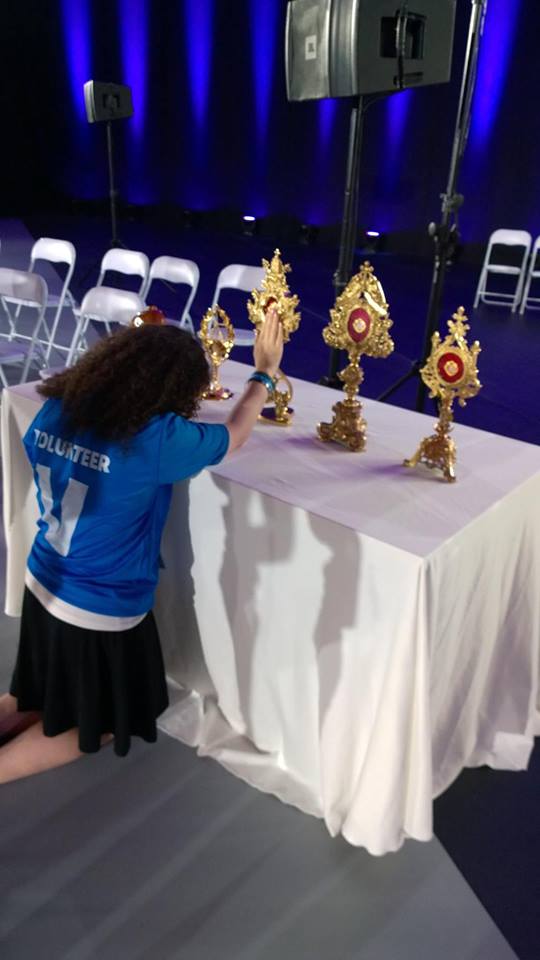
This is the final post in a series of posts entitled Retracing My Footsteps in the City of Saints by Eugenia Geisel for Eastern Catholic Person on her experience of encountering the saints in Kraków as part of the ordinary supernatural during World Youth Day. There are four previous posts, one on the Black Madonna, a second on Blessed Jerzy Popiełuszko, a third on Holy Faustyna and the Divine Mercy Devotion, a fourth on St. Albert Chmielowski, a fifth on St Maximilian Kolbe, and a sixth on Pope St John Paul II.
Eugenia recently graduated from the University of Washington in Seattle with a major in Korean and minors in Comparative Religion and Russian and Slavic Literatures; she took my course on Trans-Pacific Christianities, a class to which I had to issue a public retraction last year. Because Eugenia is a cradle Latin with Byzantine sympathies, I consider her for the purposes of this blog to be our Latin Catholic Person.
But there is another more compelling reason for Eugenia to post here. While Chris Altieri has criticized the participants at World Youth Day who are nearing age thirty for extended adulthood, Eugenia fits even his criterion for what ‘youth’ are. This is not to take a position on ‘youth’ – we can only be persons – but it is to say that this is an account of how one young Latin Catholic Person encountered the saints in the city of Kraków and cared enough about communion to tell an Eastern Catholic Person about it. The term ‘City of Saints’ is admittedly from George Weigel’s newest book, but it was also used widely during the festivities in Kraków, so any convergences with Weigel’s text is (unless noted) genuinely incidental.
It is important to note that this is a Latin Catholic reflection on an Eastern Catholic Person’s blog. Eugenia makes some interesting claims about Byzantine practice while describing Latin devotions. This means that in the future, I will have to reflect more deeply on these items as well.
On the feast of Pope St. John Paul II, I flopped on my bed, exhausted. The night before, I just returned from a Catholic conference I had been planning for since the beginning of the year. Everything I had left to give had been drained from me and yet I hadn’t felt so alive in months. The last few months for had been upheavals of major transitions, of anxieties, physical illnesses and pain. Yet there was also grace, beauty, and realizations that I could do all these things I told myself I would since the beginning of the year and yet somewhere deep within me surely doubted that I was capable. Exhausted, yet invigorated (surely with some help from the sacraments), I dragged out my handwritten notes, looking at what I had written on John Paul II.
Which brings me to the conclusion of this series. I have written and rewritten and edited and revised and deleted and crumpled up this draft or variation of drafts time and time again, knots in my stomach at my inability to face what I knew I needed to in the mere act of writing this, whether anyone but myself read it or not. The worst part was that this struggle of writing this is one and the same with what this reflection is about. Pilgrimage does not resolve our struggles, even a year of reflection on one cannot do so. It cannot and should not, but it can shed a light upon them. World Youth Day, like any pilgrimage, is not a culmination, but a catalyst.
I reached for the Dominican cross around my neck, the one I got from the Dominican Liturgical Institute and suddenly I was back. I closed my eyes and there I was once more, slipping into the Basilica of Holy Trinity late at night, kneeling on the hard, cold floor before the Blessed Sacrament. I heard the trumpets of St. Mary’s, I smelled the roses in the rectory gardens of St. Florian’s, I tasted the rain on my tongue as I laughed and danced in the market square and the żurek that warmed me after I let it chill my bones without care.
I opened my eyes and it almost pained me that I was no longer there, but I also couldn’t help but be overwhelmed by an immense wave gratitude for every sensation I recalled, for every drop of grace I had received, that had all brought me to where I was in that moment. I knew exactly where I was and how I got there, but I had no idea whatsoever of where I was going. I finally realized that I was ultimately faced with a choice: I could either let the anxiety consume me, or I could remember whose I was.
I closed my eyes once more and her dark ones were staring deep into mine all over again. Staring at the Black Madonna’s face in the John Paul II International Airport, I was certain of only one thing: ‘I knew it was going to be okay. More than okay, but beautiful and wonderful’. What followed these moments of peace was a flurry of activity as I met some of my fellow choir members, was served a Polish pickle on a platter from some kind of airport hospitality the likes of which I had never seen, and once again literally running- this time to meet a cheery Polish Dominican in his white habit and a sunhat.
The next thing I knew I had boarded a bus and all of our choir and instrumentalists were in one place, headed to the small town of Krzeszowice, where we would stay at a Vincentian retreat house and learn forty pages of music. This first weekend in Poland is seared in my memory, but if there is something that I will surely never forget, and I might even dare to say others wouldn’t either, is the moment when we all sang together for the first time.
Considering myself one of these ‘musicians’ was among the sources of the anxieties I had brought with me and the Black Madonna had helped me ease. Just as I saw her face everywhere I turned, as I followed in the literal footsteps of Karol Wojtyła, his relics seemed to follow me back. From the Vincentian house, to St. Florian’s (the first church he was assigned to as a new priest), to the Mercy Centre at Tauron Arena, and even in the Wieliczka Salt Mine, there he was.
Relics, pieces of holy men and women’s bodies, or something that had been touched to their bodies or belonged to their person, are worthy of veneration in our tradition. Catholicism is an incarnational faith, and the incarnation of Jesus as fully divine and fully human means that the body can be sanctified, as it was meant to be all along. The hair, bones, nails, clothing of those we have been reassured are in heaven reminds us of this beautiful truth, so beautiful that we even kiss them.
This truth washed over me in a quiet moment in the Mercy Centre before the masses of Pilgrims arrived. There I was kneeling before each of these saints I have written about, and I had come to love them all. However, as I went down the line venerating them one by one and praying for each one’s intercession, I found myself particularly moved as I came to my brothers’ patrons: St. Maximilian Kolbe, and St. John Paul II.
I was overwhelmed as I prayed for my little brothers, but I also was made particularly aware of this incarnational truth of sainthood as my lips touched the cold glass between me and Karol Wojtyła’s remains- he lived in my time and space, he influenced my life while still on earth, and yet through the posthumous miracles that led to his canonization, I knew he now found absolute unity with Christ in heaven. And yet here my struggling, selfish, sinful lips were so close to his holy remains. As I slowly lifted my lips from the glass, a soft pink outline of them remained. Though my eyes had begun to well up with tears, I felt my face beaming. Sainthood is real. Sainthood is possible, I thought, as I carefully wiped my lipstick from his relics. It is not the stuff of fairytales. Or maybe fairytales are more real than the world wants us to believe. Quiet miracles do happen everyday, after all.
In the figure of Eddie Mannix, I saw the young Karol Wojtyła. Perhaps an odd juxtaposition, but the truth nevertheless. I also painfully felt an echo inside of me as Eddie faced his discernment of his calling as an artist. That was something I had been struggling with for longer than I had let myself realize or admit. I had been entrusted with gifts, and yet all too often I had let fear and anxiety lead me to selfishly keep them to myself, to the point where I quite nearly didn’t believe those gifts truly existed or that they were worth anything.
This was a gradual process, I suppose. I pushed these gifts and the art they produced aside until they became less and less of a part of my everyday life. Something I have come to discover through the mistakes I have made, is that if something does not become part of our everyday, it is eventually no longer a part of ourselves. If we want to allow something to shape who we are, especially things that make us most who we truly are, they must be a part of our everyday. Holiness and virtue are not attained in the extremes or the highlight reels, but when the extraordinary is intertwined with the ordinary, when the brilliant is practically kissing the banal.
By the time I had arrived in Krzeszowice, I had eventually been reawakened to the reality that “Beauty will save the world” (Dostoevsky, The Idiot). That spring prior to my pilgrimage, I had taken a leap and taken on an additional minor: Russian and Slavic literature. I honestly did so for the mere sake of my own passion, and I never regretted it for a second. In that short ten weeks in which I started fitting those classes into my schedule, I learned more from novels, short stories, and films than I had in all the textbooks I had ever read. Sure I loved history and language and theory, but I remembered what deep inside I had already known for so long but allowed the logical and pragmatic temptations of academia lure me away from- that the deep truths and underpinnings of reality are oft told best through fictions. My heart was moved and crushed between the thin pages of thick Russian novels, and my passions reignited within the frames of bittersweet Polish films. I finally found myself able to believe in the power of art once more. Yet I still struggled to call myself an artist.
The only way I could defeat the anxiety I had in being a musician, an artist, in Kraków was the same way I found I could defeat the anxieties surrounding all I had to face over the course of these past few months: to arm myself with prayer and the sacraments and to simply prove to myself that I could do it. And so, I did.
We arrived that Monday in Krakow, I remember well the city coming into view when emerged from those winding provincial roads. The city itself felt like meeting someone new who you can’t help but feel like you’ve somehow known your whole life. Around me unfolded a palpable history and tradition woven into the fabric of the streets-here was a culture that not only held it’s artists in high esteem, it even cherished them. The memory of a time when the arts were an outlet of subversion and communication in the face of oppression was not a total phantom quite yet. Just pick up a biography on young Karol Wojtyła. It was in this environment in which I finally owned my identity as artist- and all that took was simple action. I didn’t need to call myself an artist, I didn’t need to feel like an artist. I simply needed to do art. I simply needed to take my 40 pages of music, and join my soprano voice with the rest of my choir. It was my action that made me what I was, not some kind of label or identification.
Once I freed myself from that burden, I was further liberated by the realization that all the things that ate me up inside-and yet that i managed to accomplish, if by quite literally the grace of God-were never about me after all. It was for Christ, his Church, and his beloved people. If I managed to remember that perhaps things weren’t so scary. I realized, albeit gradually, that the same was true of virtue. One needn’t feel charitable, hopeful, faithful. One simply needs to choose to love, choose to hope, choose to have faith-all of which require action. True greatness is only attained when one submits oneself to the divine will of God via action of our own will- and in doing so becoming more and more of who we truly are, sharing of our gifts so that we may decrease and He might increase.
On this feast of All Saints for my Latin Church, I remember all the saints whose relics my lips have touched. I close my eyes once more and there he is: “Nie bój się!”
“Do not be afraid. Do not be satisfied with mediocrity. Put out into the deep and let down your nets for a catch.”
At last he was finally so much closer to me in the perfect unity that his death brought him than we ever could have been on earth.
If you want to read more from Eugenia, you can find her on her new blog Lipstick on my Relics.

